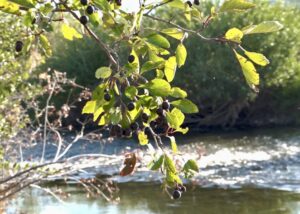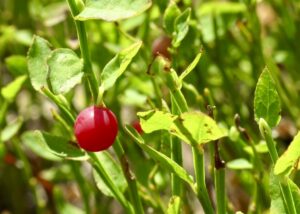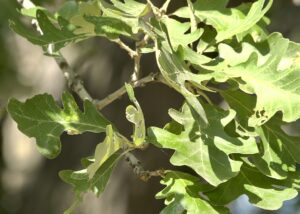Habitat
many habitatsPlant Uses
astringent, constipation, digestive problems, food, hemorrhoids, stomachaches, treat woundsVideo Presenter
Melanie Smokey, John Mionczynski & Allen MikeSilver Buffaloberry
Melanie Smokey (Western Shoshone/Washoe) picks a traditional food that is sweet and tangy and can be made into a sauce for dried meat like ketchup in appearance and once cooked very high in phenolic antioxidants like lycopene for cardiovascular health. She reminds us that the red color to these berries is the result of an abundance of these antioxidants which attach to free radicals in the blood. Free radical ions can cause oxidative damage to every organ in the body. They are produced naturally anytime we eat meat. Ancient Shoshones and Crows (Apsaalooka) often ate these berries when they ate meat, which balanced out the metabolic by-products of digestion. Indigenous wisdom!
Allen Mike (Duckwater Shoshone) reminds us of the downside of picking buffalo berries: sharp thorns! Like most berries, they become sweeter after a frost.
Western Shoshone refer to buffalo berry as buck berry while Eastern Shoshone call them bull berries referring to the buffalo bull and their general use as a sauce with dried buffalo meat.
These berries are very medicinal. They are astringent and loaded with vitamin C and saponins making them an effective treatment for sores, open wounds, infections, stomachaches, hemorrhoids, and digestive problems. They are a well-known treatment for constipation – which means they will cause a ‘loosening of the bowels” – so don’t eat too many!






